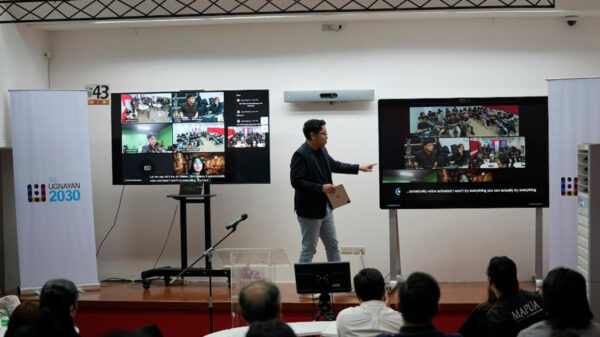The Philippines can be more globally competitive through technology innovation and ICT skills development, according to the new country manager of networking products and services provider Cisco Philippines.
Mario Luis Castaneda envisions the development of next-generation, highly skilled ICT workforce to drive the knowledge and Internet of everything (IoE) economy in the country.
“Cisco strives to help the country to become more competitive in the global landscape. With the ASEAN Economic Integration less than two years away, we see the importance of keeping pace with our neighboring countries. We, at Cisco, see this as a main opportunity to contribute to the sustaining of the Philippines’ economic momentum by providing innovative solutions centered on technology and the development of a knowledge driven economy through our success with the Cisco Networking Academy program,” says Castaneda.
As part of a long term vision Cisco laid out more than a decade ago, Castaneda discussed how the company leverages on ICT growth to increase broadband penetration; how crucial infrastructure development is to the country; and its initiative in addressing the knowledge/skills gap in terms of IT professionals.
Despite being one of the leading call center service providers in the world and social media savvy, the Philippines still lags behind in terms of broadband penetration. The 2013 edition of the UN Broadband Commission’s State of Broadband Report showed that broadband penetration in the Philippines is at only 2.2% for fixed broadband connections and 3.8% for mobile broadband. Globally, we ranked 110th and 111th, respectively. Besides, the 2013 Network Readiness Index done by the World Economic Forum in 144 countries placed Philippines at 86th, and listed it at the bottom of APAC countries.
These rankings are not meant to discourage but give more reason to step up in the game, according to Castaneda. As more people connect through their smartphones, more establishments in major cities offering free Wi-Fi connections and telecom companies offering more affordable data plans for their subscribers, Cisco sees positive future outlook for broadband penetration in the Philippines, that is, moving up to the level alongside countries in the ASEAN Economic Community.
Since broadband availability is considered a key tool to social as well as economic development, Cisco aims to leverage on ICT growth to hike broadband penetration in the country by supporting the ICT programs of the government whenever possible.
Infrastructure development is another area that needs proper attention. The company says that this year will be the transformational pivotal point of the Internet of Everything (IoE) which has huge potential to transform job creation, businesses, communication, healthcare, and other disciplines by connecting people, process, data and things.
Through collaboration with relevant government agencies, Cisco developed projects that are starting to change how offices and residences operate. Examples of these are the development of smart buildings, smart grids, and smart cities through intelligent, network-centric solutions aimed at creating relevant industries that can boost the country’s economic growth. This way, Cisco lays the groundwork for infrastructure capable of accommodating the right people through the right process within the right businesses, talking about the right things.
To address the widening IT skills gap in the Asia-Pacific region, the company initiated the Cisco Networking Academy in 1997. Since then, it has trained over 840,000 IT professionals all over the Asia-Pacific region, 284,297 of whom are from the Philippines. It currently has 187,000 students enrolled throughout 890 academies in 25 Asia-Pacific nations where 70,761 enrollees are from the Philippines enrolled in 154 academies.
The Philippines accounts for the biggest number of skilled IT professionals trained by Cisco Networking Academy. Aiming for a more globally competitive Philippines, Castaneda said his goal is to have at least one globally-competitive IT professional in every Filipino household.



















































































































